Maples are a group of shrubs and trees belonging to the soapberry family (Sapindaceae). There are approximately 158 species of maples, most of which are native to Asia with a number also appearing in Europe, Northern Africa and North America. [Source: BBC NEWS]
The Bigleaf Maple (Acer macrophyllum) also referred to as Oregon Maple tree, is native to the Pacific Northwest region of North America, where it can be found in parts of Alaska, California, Oregon, Washington and British Columbia.
The leaves of the Bigleaf Maple can measure up to 12 inches in diameter, which is significantly larger than the leaves of other maple species. This characteristic makes the tree easy to identify and is likely why it was given its common name.
As the largest of all maple species. Let us talk about the facts, characteristics as well as cultural significance of the Bigleaf Maple.
Facts About Bigleaf Maple
- Its botanical name is Acer macrophyllum. The term “macrophyllum” is derived from the Greek words “makros,” meaning long or large, and “phyllon,” meaning leaf.
- It is a deciduous tree in nature, shedding its leaves in the fall and regrowing them in the spring.
- Big-Leaf Maple grows rapidly when young, more slowly as it ages.
- It is the largest maple species, capable of reaching heights of up to 100 feet.
- Hardy to USDA zones 7 through 11.
- The leaves of the Bigleaf Maple are the largest of any maple species.
- The tree produces a sugary sap, which can be used to make maple syrup.
- The root system of bigleaf maple is shallow and spreading on wet or shallow soils.
- It is an important food source for wildlife such as deer, elk, bears, birds and small mammals.
- Bigleaf maple is moderately long-lived; some individuals may reach 300 years of age.
- Their threats include: habitat loss due to development, logging and climate change.
- Like some other maples, bigleaf maple produces sap that can be boiled down to a mineral-rich and delicious maple syrup.
- Its fine-grained, pale brown wood is commercially valuable for making musical instruments and furniture veneer.
How Does Bigleaf Maple Look Like?
Growth Size
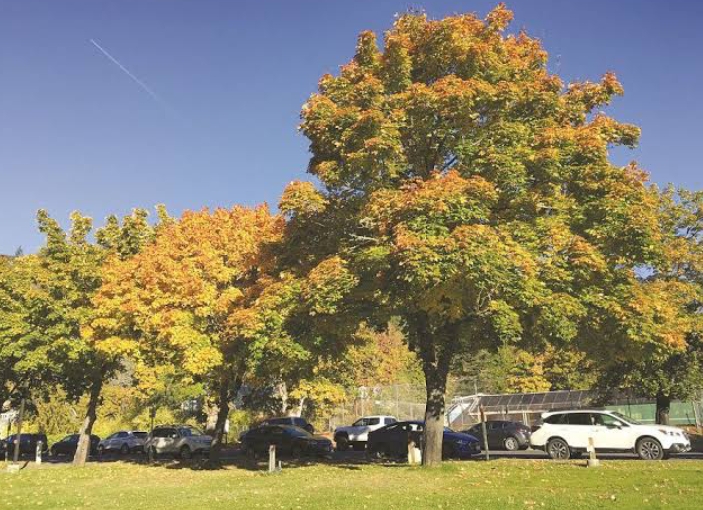
As the largest of all maple species, the Bigleaf Maple can grow up to 100 feet tall and have a trunk diameter of up to 4 feet.
When it grows in the forest, it develops a narrow crown that is supported by a stem free of branches for half its length. Those growing in the open have a broad crown which is supported by a few large, spreading limbs.
Bigleaf maple is a fast-growing tree, especially in its early years. In an environment with adequate rainfall and favorable temperatures, it can add up to 3 feet of growth per year. However, its growth rate slows down as the tree reaches maturity. It takes 30 to 50 years for a Bigleaf maple tree to reach full maturity.
Lifespan
In general, Bigleaf maples have a lifespan of 200 to 250 years, with some individuals living up to 300 years. Environmental factors such as drought, frost, fire and human activity such as clearcutting and other forms of forest fragmentation can affect the health of the tree and reduce its lifespan.
For example, in May 2018, Trinity College Dublin (TCD), Ireland, had to remove the two oldest Oregon maples in Europe, which had been standing for 175 years. The first tree fell due to inclement windy weather, as its interior was already beginning to rot. The second tree, which was also infected, was cut down because it was expected to suffer the same fate. Both trees were located in the grassy area adjacent to the Front Square of TCD, which was once the cemetery of All Hallows.
Also Read: Different Types of Sycamore Trees
Leaves
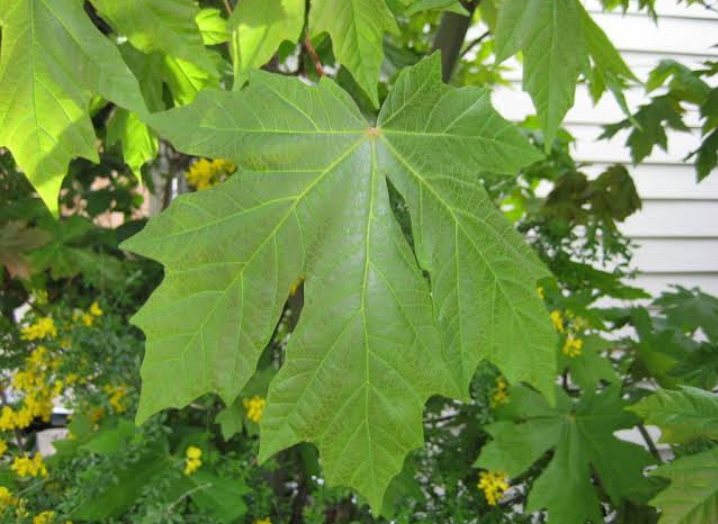
The leaves of bigleaf maple are among the largest of any maple species. They measure about 8 to 12 inches in diameter (across). In some cases, they are even larger.
They are pointed at the tip and rounded at the base, with indented margin that divides into five to seven lobes. The lobes are deeply incised, creating a palmate or hand-shaped appearance. The lobes are also separated by deep, U-shaped notches that extend almost to the leaf midrib.
The leaf surface is rough, while the undersides are smoother. The veins on the underside of the leaf are prominent and have a reddish color. In the spring and summer, the leaves are a bright or vibrant green, while in the fall, they can turn yellow, orange or red.
Bark

The bark of the bigleaf maple tree changes over time as the tree grows and matures. When young, its bark is smooth and thin, with a light brown to grayish-brown color. As the tree matures, the bark becomes rougher and can be up to several inches thick with patterns of deep ridges that run vertically up the trunk. These ridges form because the bark is growing faster than the underlying wood.
Also, as the bark ages, the outer layers of bark begin to flake off in large, papery sheets, exposing the smooth, light-colored wood underneath.
Historically, the bark has been used by Native American tribes to make baskets, hats and other woven goods.
Flowers
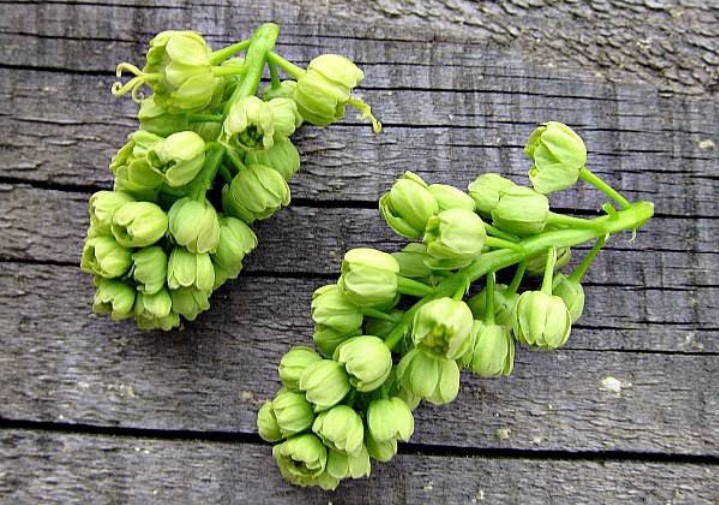
The flowers of the Bigleaf Maple are yellow-green in color, and appear in hanging down from the branches in clusters. Each individual flower is composed of five sepals and five petals, which are fused together into a bell-shaped structure. In other words, each flower in shape resembles tiny bird nests.
The flowers bloom in the spring that is between April and May, before the leaves begin to grow. Each bigleaf maple flower contains both male and female reproductive organs. The flowers are pollinated by insects such as bees, flies and beetles.
Fruit

The fruit of the Bigleaf maple is called a samara, which is a dry, winged fruit that is characteristic of the maple family. The samaras of this maple are relatively large, about three inches in length. They also have a U-shape which is totally different from the shape of samaras of other maple species.
The samaras of the Bigleaf maple mature in late spring or early summer. Birds such as the Evening Grosbeak and the American Goldfinch commonly feed on the seeds inside the samaras, while squirrels and other rodents will eat the entire fruit.
The Samaras of maple trees is also commonly known as “helicopters” or “whirlybirds” due to the way they spin and spiral through the air when they fall from the tree.
Also Read: Different Types of Willow Trees And Shrubs
Root System
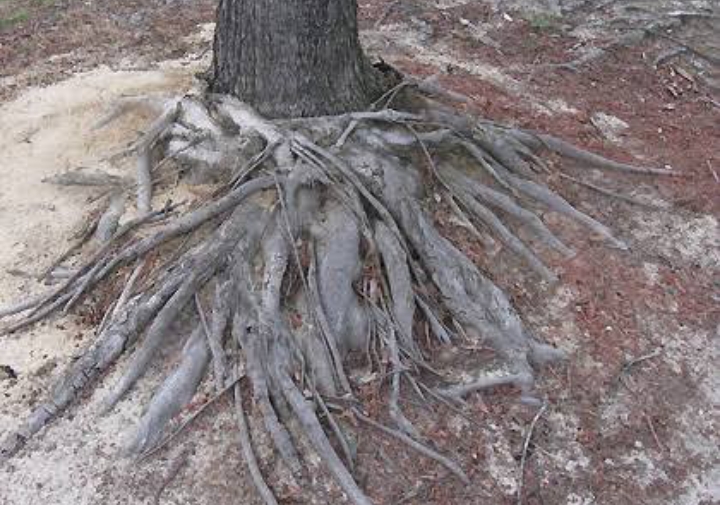
The root system of the Bigleaf maple can be divided into two main parts: the taproot and the lateral roots. The taproot is not as developed as in some other tree species, and it is often replaced by a more extensive system of lateral roots.
The lateral roots are numerous, shallow and spread out horizontally from the base of the trunk in all directions. They can extend up to 70 feet or more from the tree, and their combined length can be several times longer than the height of the tree.
The root system is actually adapted to the moist soils and mild climate of its native habitat, and it can be quite sensitive to disturbance or changes in soil moisture.
Though not a common occurrence, the root system can form root sprouts. These are new shoots that grow directly from the roots, usually near the base of the trunk. They can allow the tree to regenerate quickly after disturbance or damage. [Source: Oregon State University].
Wood of Bigleaf Maple
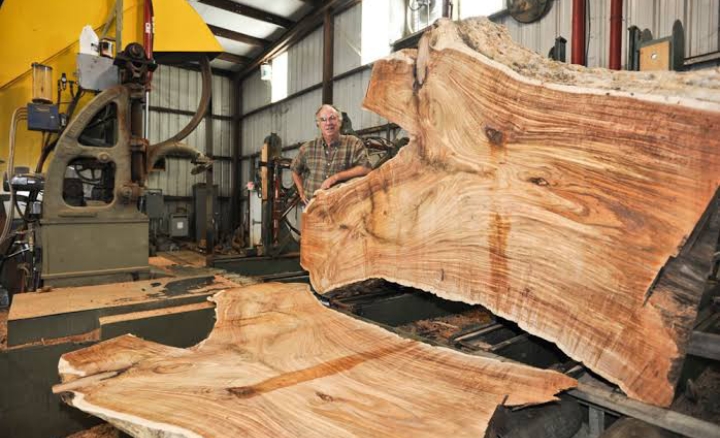
Bigleaf maple wood is uniform in texture and light in color. The color can be creamy white or light brown. In general, it has a straight grain pattern, but in some case, the grain pattern can be wavy or curly grain. The wood is also hard and strong.
Bigleaf maple wood can be used for furniture, flooring, cabinetry, paneling, musical instruments and decorative veneers. It can also be used for turned objects such as bowls, vases and other decorative items.
Seeds
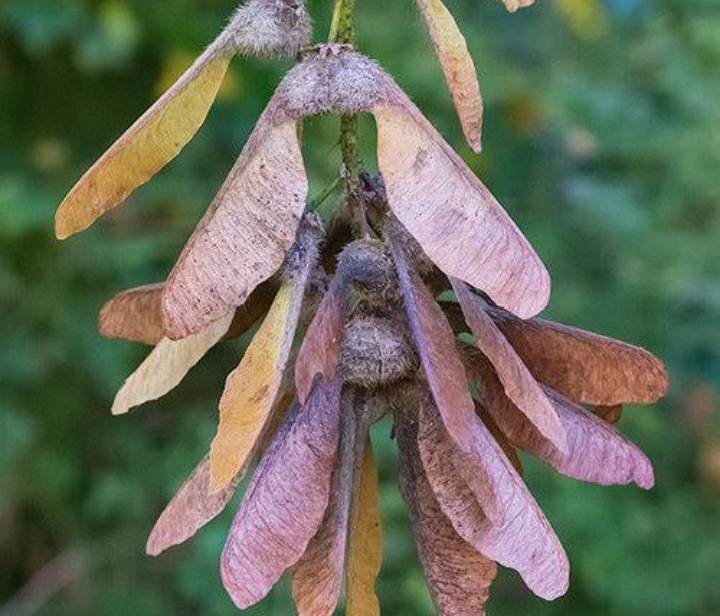
After pollination, the flowers develop into clusters of samaras that ripen over the summer months. As they mature, the samaras turn from green to yellow to brown, and the wings become papery and translucent. When the seeds are fully ripe, they begin to drop from the tree. They can be carried by the wind for distances of up to several hundred feet.
How to collect and propagate the seeds
- In the fall, you can check for seed ripeness by gently squeezing the samaras; if they release easily from the tree, they are likely ready to be collected.
- Once you have collected the samaras, you will need to remove the seeds from the wings. After separating the seeds, discard any that are damaged or discolored.
- The seeds can be stored in a cool, dry place for several months before planting.
- To plant bigleaf maple seeds, sow them in a pot or seedbed filled with well-draining soil. The seeds should germinate within a few weeks to a few months.
- Germination and establishment rates are best under partial shade. Natural rates of establishment are low under dense shade or in clearcuts.
Habitat and Distribution
The bigleaf maple is native to the Pacific Northwest region of North America. It is commonly found in the coastal regions of Washington, Oregon, and British Columbia, but can also be found inland in parts of Idaho and Montana.
In these places, you can easily spot the trees in low-lying areas such as riverbanks, along the coast and moist areas such as canyons and valleys.
According to University of Oregon. The bigleaf maple tree is a cold-hardy tree that is able to withstand freezing temperatures. And thus, it can grow well in USDA zones 7 through 9. These zones have average annual minimum temperatures ranging from 0 to 30 degrees Fahrenheit. The maple also thrives in areas with high rainfall or tropical like condition.
Use of Bigleaf maple in the landscape
- Because of the spreading canopy and large leaves, this tree can work well as an excellent shade tree for large properties and front yards.
- It can work well too as an ornamental tree in front yards and streets because in the fall, the leaves turn shades of yellow and gold before dropping to the ground.
- It can also be used to attract wildlife in the landscape. Its large branches and trunk provide perches and nesting sites for birds, and its flowers and seeds provide food for pollinators and small mammals.
- Bigleaf maple has an extensive root system that helps to stabilize stream banks and prevent erosion.
- The leaves of bigleaf maple can be used as fodder for livestock, particularly goats.
- Planted in a row, bigleaf maple can create a dense privacy screen that can block out unwanted views to the yard.